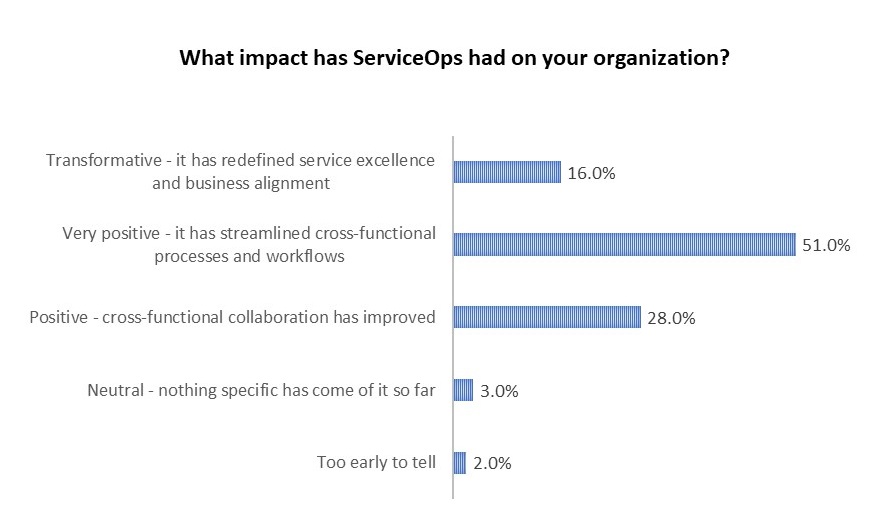A working definition: ServiceOps is a technology-enabled approach to unifying IT service and IT operations management for excellence in delivery of digital business services.
Although the two teams have different charters and skillsets, IT service and IT operations are inextricable. There is no service without effective IT operations.
Reducing friction caused by overlap, gaps, conflicting organizational goals, and disjointed processes, ServiceOps is all about IT service to the business. It is people-centric, technology-enabled, and C-level endorsed. It's also on the rise.
Recent EMA field research found that ServiceOps is either an active effort or a formal initiative in 78% of the organizations represented by a global panel of 400+ IT leaders. It is relatively early but gaining momentum across industries and organizations of all sizes globally.
Benefiting IT service and operations equally, ServiceOps tends to be grassroots in origin, but is well supported and funded at the C-level. Both grassroots adoption and C-level support stem from the fact that ServiceOps directly addresses many of the highest-priority IT objectives and challenges, especially IT employee productivity, reduction in outage frequency/duration/impact, improved service, user experience, and cost-cutting.
ServiceOps runs on automation and AI/ML technology tracks already laid down in cross-functional workflows. Most of all, ServiceOps makes sense to the people doing the work because it is practical and slashes wasted time on both sides.
When EMA asked representatives from its global panel of ServiceOps leaders to rate its organizational impact, the results were almost universally positive.
What Impact Has ServiceOps Had on Your Organization?

In case anyone is wondering, participants were offered numerous less-than-positive responses. They don't show up on this chart because negative responses were simply not chosen.
ServiceOps has no downside. It uses technology that is already in place and well understood so additional investment is no impediment to adoption. Results are not only immediate, but important. Practitioners answered the question, "What are the results when service and operations are effectively unified (ServiceOps)?" with a virtual tie for first place:
■ Faster time to find and fix problems
■ Higher productivity and less wasted time
What organization doesn't want these results?
They are logical outcomes of ServiceOps, which turns out to be a codeword for effective collaboration and effortless cooperation.
A word about the name … there is no magic to the phrase "ServiceOps." It's not a product or a technology. It's not even a methodology. It's a common-sense use of existing resources toward a common goal, so the name doesn't matter. However, EMA anticipates that the name will become commonplace and well recognized because it is simple, and it accurately conveys its meaning in the same way that DevOps does for its sphere of function.
So, why does ServiceOps matter now?
■ It's happening now — either formally or informally
■ Its benefits can be amplified with organizational support and funding
■ Recognizing the trends and opportunities makes it possible to harness the momentum and maximize results
■ A chance to make a difference without disruption or tons of additional investment
■ The competition is moving forward
Details of this research and its findings are covered in a vendor-free webinar on April 4:Automation, AI, and the Rise of ServiceOps


